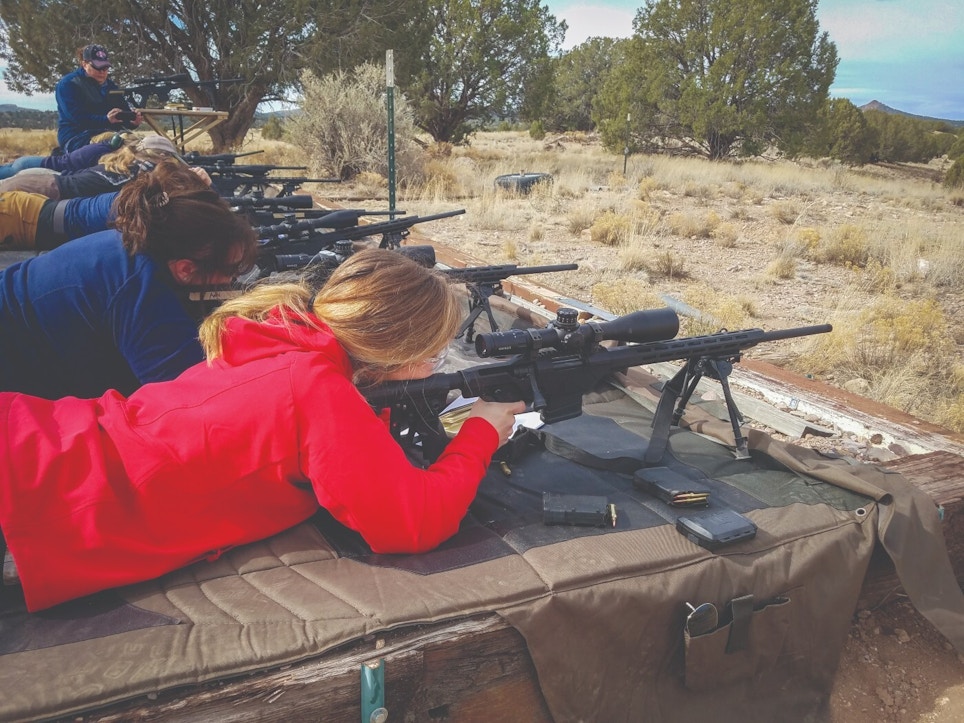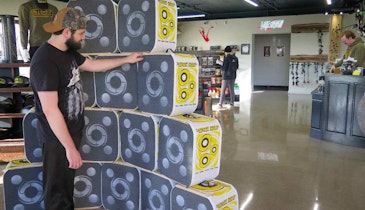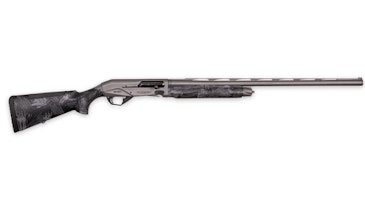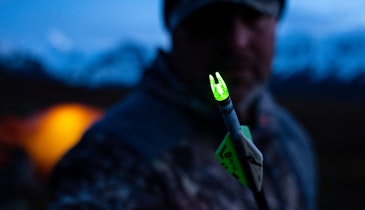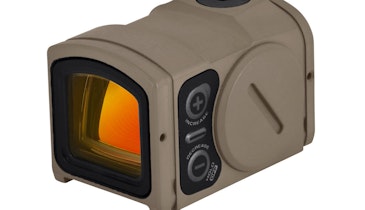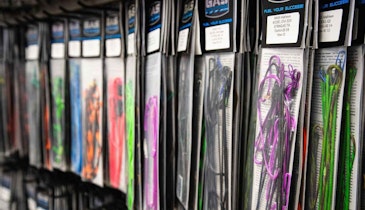You may be a hunter; you may not. But if you work, manage or own a hunting retail business, you’ll probably be talking to hunters every day. Sure, hunters like to chat about big bucks or piles of ducks, but few are so naturally gifted that they don’t have to regularly practice to tag a distant deer or connect with a rocket-like teal. And they practice at a range.
Often it’s an outdoor range at their deer lease or at a sporting clays course, or maybe they bring their centerfires, rimfires or handguns to an indoor range to better control the variables. Regardless of where, hunters need help knowing what’s out there, what they can buy, to help them practice more efficiently and be better hunters.
I see this all the time at the outdoor range I go to. One lane will have a shooter who has a $2,000 AR-15, a fine spotting scope, Lead Sled, electronic muffs, new targets and a DOPE card app on their phone. And here comes the hunter. He’s got one box of .30-06 he’s had for the last three years, portable 8x42 binos, a backpack for a rest, cardboard and a Sharpie.
Who is going to have a better day at the range and be a more accurate shooter?
Hunters are always looking to use their gear in the field, but they first should be gearing up for the range so they are comfortable, effective and efficient.
I spoke with a number of hunters and people who work at guns stores across the country to find out what hunters who are hitting the range need to know about gear.
One of the biggest trends in the retail range world is higher quality ear protection.
‘WHADYA SAY?’
Choosing ear protection is a big part of being comfortable on the range. If you are a handgun shooter, most any muff will work. (A good tip for newbies is to recommend they put in foam ear plugs first and then muffs over them.)
But for a rifle shooter or a wingshooter, most muffs don’t work. If you put “wood on wood,” as we say, that is, your cheekbone to the stock for proper alignment, most muffs will be in the way. The stock pushes the muff up, breaks the seal and opens an area for the sound to go right into the ear canal. Next thing you know, they’re moving their head all around to see through the sights and accommodate the muffs. The gun’s report, and anyone else’s nearby, will cause them to flinch, and we all know that’s a bad habit.
At the very least, low-profile, slim ear muffs will help. Walker’s Razor and Champion Vanquish muffs are very thin and work for many. But if a hunter wants it to be as natural as possible, in-the-ear electronic protection checks all the boxes.
“Electronic hearing protection is big thing right now,” said Paul Kaufmann, owner of Timberline Sporting Goods in Rifle, Colorado. “We’re selling electronic ears 10 to 1 over others. Anyone who has been doing a lot of shooting knows electronic hearing is the way to go.”
Electronic in-ear plugs and muffs amplify quieter sounds, like talking or game-animals sounds, but cut out loud gun reports that would otherwise damage your ear.
Kaufmann said the electronic options are a higher-ticket item, yet they are big money-makers with about 10 to 15% margins. They’re able to sell them for just barely over MAP, minimum advertised price, he said.
Still, there are some very high-end electronic ear protection options out there, like TETRA’s Multi-Pursuit AlphaShield in the $1,500 range, or Westone DefendEar, which is well above $1,000. They are becoming more popular and more widely available, too. On the other end, Walker’s In-Ear Silencer Era Buds go for $60.
While the top-end products are not for everyone, it seems people are paying more attention to the need to protect hearing. So don’t avoid the topic: Suggest quality hearing protection.
Targets
A good friend of mine never buys targets. He makes his own steel plates — tiny ones, medium ones and big heavy plates. Good for him, and if you have an arc welder, go for it. But most of us need paper targets to improve accuracy for inside and outside shooting. Sure, you can make an X with a Sharpie on that Bud Light case, but if you want to get precise, you’ll need some decent paper targets.
As a retailer, you can’t go wrong with whatever you choose — almost. A few retailers told me targets with small animals just don’t sell. Sighting-in targets with 1-inch squares, B27E, IPSC targets, targets with bad guys, and even zombie targets, are popular. But squirrels, groundhogs and prairie dogs, not so much.
One retailer said that anyone who is plinking might shoot a game target once, but then they’ll be shooting the real thing. When they do, they’ll want to improve accuracy at long distances. Precision targets help a hunter see improvement much better than steel or random carboard.
A few quality products and consistent companies are Birchwood Casey and Champion. BC’s Long Range Sight-In Target is a popular one because it’s reactive — that is, the bullet doesn’t just make a holes, but it splatters, so it’s visible for a distance. Champion’s VisiColor also splats, is adhesive, and has a 1-inch grid.
Don’t forget about game targets. They sell well, said retailers. Billiards, chess, darts, poker and even cornhole targets — help make sure your customer is having a good time and getting more accurate at the same time.
Guns for Hire
Speaking of fun, firearms rentals are also rising in popularity, according to Bill Cazier of Hi-Caliber Firearms in Georgia.
Of course, it’s a good way to serve a customer who does not yet have a gun. But more often, people are trying out more guns to decide which they will purchase.
“They’re now renting two or three guns at a time,” said Cazier. “Most people want to be better shooters and be well-armed if they need to defend themselves. When they rent, they can find out what gun works best for them.”
Many are also just looking to have fun at the range.
Hi-Caliber rents pistols for $5 an hour, long guns for $7 and even machine guns for $29 an hour. Guns range from a .22LR Buck Mark pistol to a UMP .45 ACP in full auto. You can bet they make money on the ammo — you go through a lot of cartridges shooting full auto.
Steady as She Goes
Kaufmann of Timberline also mentioned that monopods and tripods seem to be selling extremely well recently.
“I’ve had to re-order Trigger Sticks three or four times recently,” said Kaufmann. “They keep selling out."
That may have to do with the fact that, for whatever reason, predator hunting is taking off in the Rifle, Colorado, area. Coyotes especially have been the target of hunters, and sticks, where you can’t go prone, are an excellent option. Other popular brands are BOG Deathgrips and Vortex High Country tripods.
Other rests, like Caldwell’s Lead Sled and Champion’s Premier Shooting Rest, help shooters get better groups.
What’s Not Hot
As someone who shoots at outdoor ranges frequently, I thought for sure range cams would be growing in popularity by now. Who wouldn’t want to see their shots on an iPad or on their phone as they happen? In these systems, you set up a cam and a Bluetooth transmitter on a tripod near your target. Back at the bench, you connect to the transmitter and view the target you’re shooting. You can record your shots in video and people can react to them as they happen. It makes shooting more social. None of the six or so retailers I spoke with indicated that their customers ever asked for them. Sounds like their time has not yet come.
Hunters know exactly what they want during the hunt, but they could use a hand gearing up for range day. Better ear protection, useful targets, solid rests and encouraging having safe fun at the range will help make sure more hunters darken your doors.
